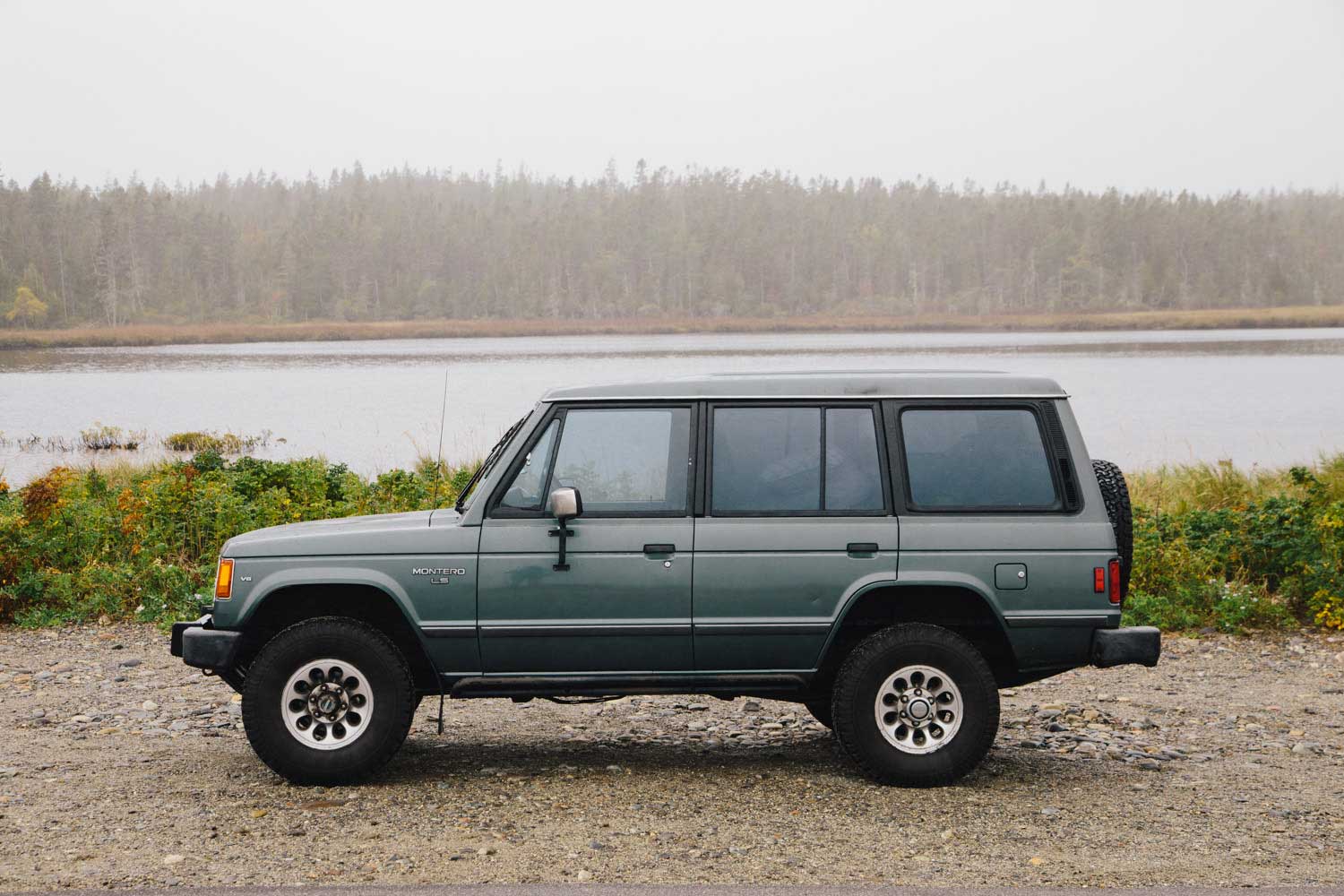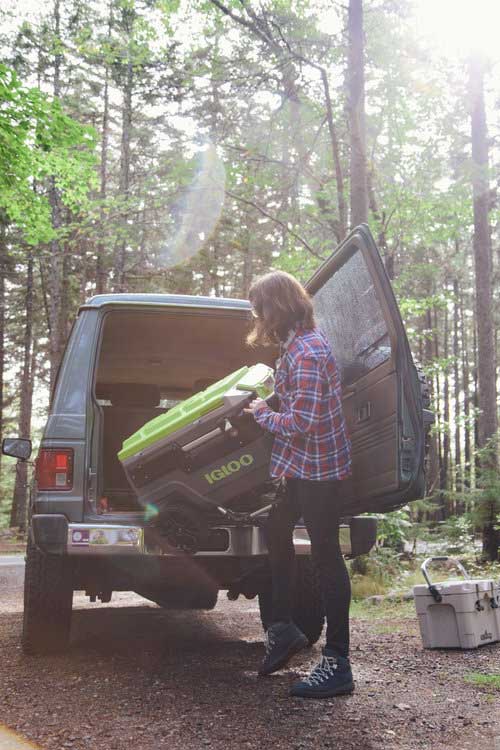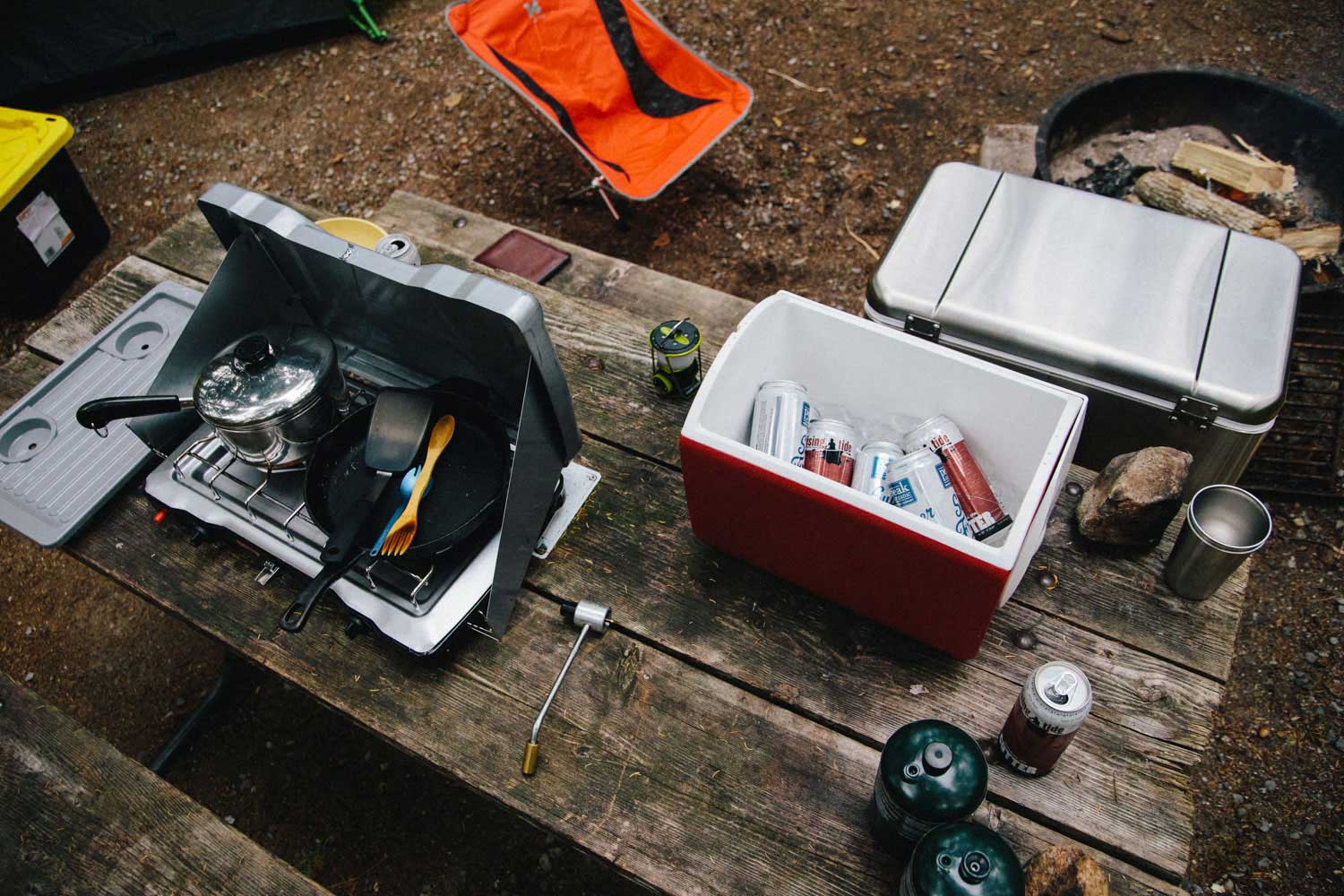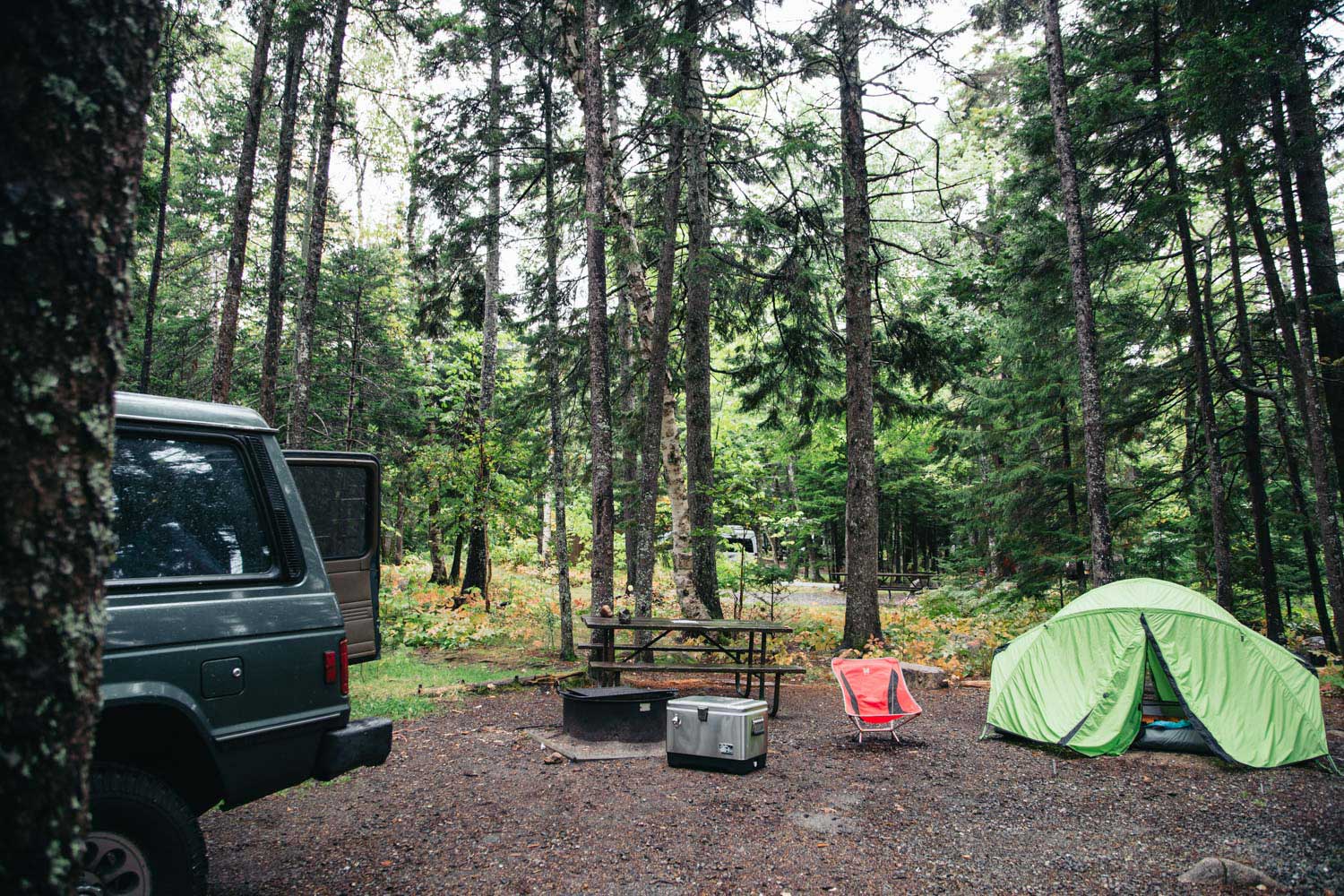The Beauty of Car Camping

The Beauty Of Car Camping
By Gale Straub
Sponsored by Igloo Coolers
On the scale of “crawling in the back of a Sprinter Van” to “backpacking 15 miles and sleeping under the stars”, car camping lies somewhere in between. I’ve grown more intrigued by backpacking in the past year, treading the fine line that divides delight and masochism, putting up my tent after a long day of hiking, and eating a sparse meal that tastes incredible for its wanting. I’ve spent countless nights in the back of a Sprinter Van with my boyfriend, Jon. The platform in the back held a queen size mattress, the van a mobile fortress from the elements. It’s convenient to drive or hike or hunker down in a coffee shop all day and simply find a parking spot and crawl in the back.
There’s a beauty to car camping, though, that I rediscovered recently on a trip up the coast of Maine with our 1990 Mitsubishi Montero. What follows is an ode of sorts, a count of the benefits of car camping!
1. You get to sleep outside.
As great as sleeping in a camper van is, there’s little like sleeping outside in a tent. The air flows through the mesh doors and the trees rustle in the wind. I feel more intimately acquainted with a place when I’m tent camping.
2. Sometimes you don’t want to carry it all on your back.
Car camping means mobility and storage space. When you’re backpacking, you count every ounce. When you have a camper van, a lot of the would-be space is used for sleeping. Our Montero has room for camping equipment, coolers, a camp kitchen, and day packs. It’s small enough to use normal parking spots, too.
3. The meals.
Food tastes better outside in fresh air. And after dehydrated camp meals and trail mix, pulling out fresh produce from your Igloo Playmate Elite cooler feels downright luxurious. With a camp stove, pans, and fresh food, you can cook like you do at home. I don’t think I’ll ever turn down pasta with pesto, a green salad with avocado, chicken sausage, and cold beer by a campfire.

The Igloo Trailmate

4. You can live this way “on the road.”
We’ve interviewed a lot of women who car camp their way around the country, proving that you don’t have to spend a lot of money on a camper van, R.V. or trailer to live on the road. It takes a different kind of flexibility and a commitment to setting up camp, but it’s a great way to see the country. A few of our favorites include Kate Jackson, Eva Griffith, and Suleika Jaouad.

5. It’s kind of luxurious.
Sure, car camping isn’t “glamping”, but it feels pretty darn lush when you do it right. You don’t need to bring the whole Sky Mall catalog (Parks & Rec fans?), but a camp chair, a thick sleeping pad, and the stuff to make s’mores all count for luxury in my book.
6. You can set it and forget it.
Reserve a camp site for a few nights and really get to know a place. Depending on the campsite, odds are you can set up your cozy tent and leave it up for the duration of your stay. Hide your reading book and headlamp inside and store your valuables in back in your car. After a day exploring the area, the minimal set up at days end makes your campsite feel like home.

Photos by Gale Straub
Gale Straub is the founder of She Explores and the host of the She Explores podcast. Learn more at galestraub.com.
Editor’s Note: This post is sponsored by Igloo Coolers. We were not biased in any way in writing this article, we truly do enjoy a good car camp!
Car camping is such a fantastic way to connect with nature while still having the comforts of home nearby. Thanks for sharing this helpful blog. We always camp at Campsite near Manila
Great list and I’m a huge fan of car camping as well. Although, slightly different approach. I’ve lived in an electric car for a year. Some great benefits!